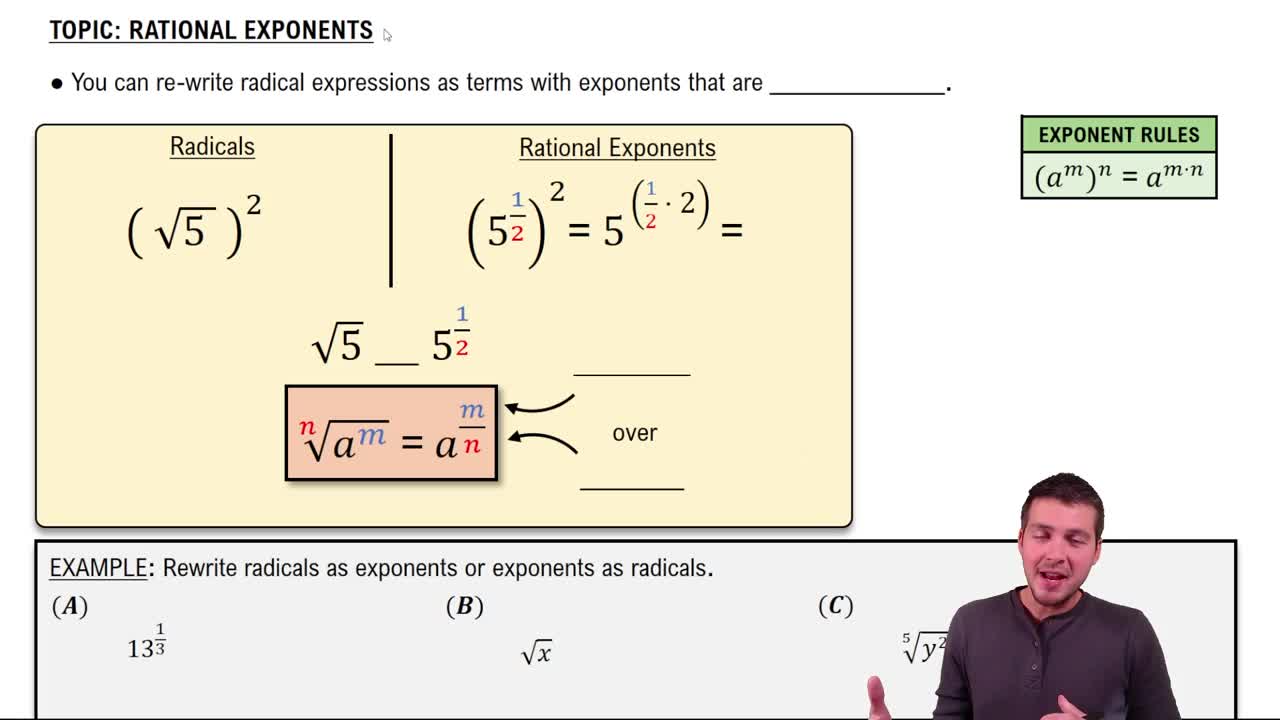Here are the essential concepts you must grasp in order to answer the question correctly.
Exponential Equations
Exponential equations are mathematical expressions where variables appear as exponents. To solve these equations, one common method is to express both sides with the same base, allowing for the comparison of exponents. This approach simplifies the equation and makes it easier to isolate the variable.
Recommended video:
Solving Exponential Equations Using Logs
Base and Exponent
In an exponential expression, the base is the number that is raised to a power, while the exponent indicates how many times the base is multiplied by itself. Understanding the relationship between bases and exponents is crucial for solving exponential equations, as it allows for the transformation of the equation into a more manageable form.
Recommended video:
Introduction to Exponent Rules
Equating Exponents
When both sides of an exponential equation are expressed with the same base, the next step is to equate the exponents. This principle arises from the property that if a^m = a^n (where a is the base), then m must equal n. This allows for the direct solution of the variable in the exponent.
Recommended video:



